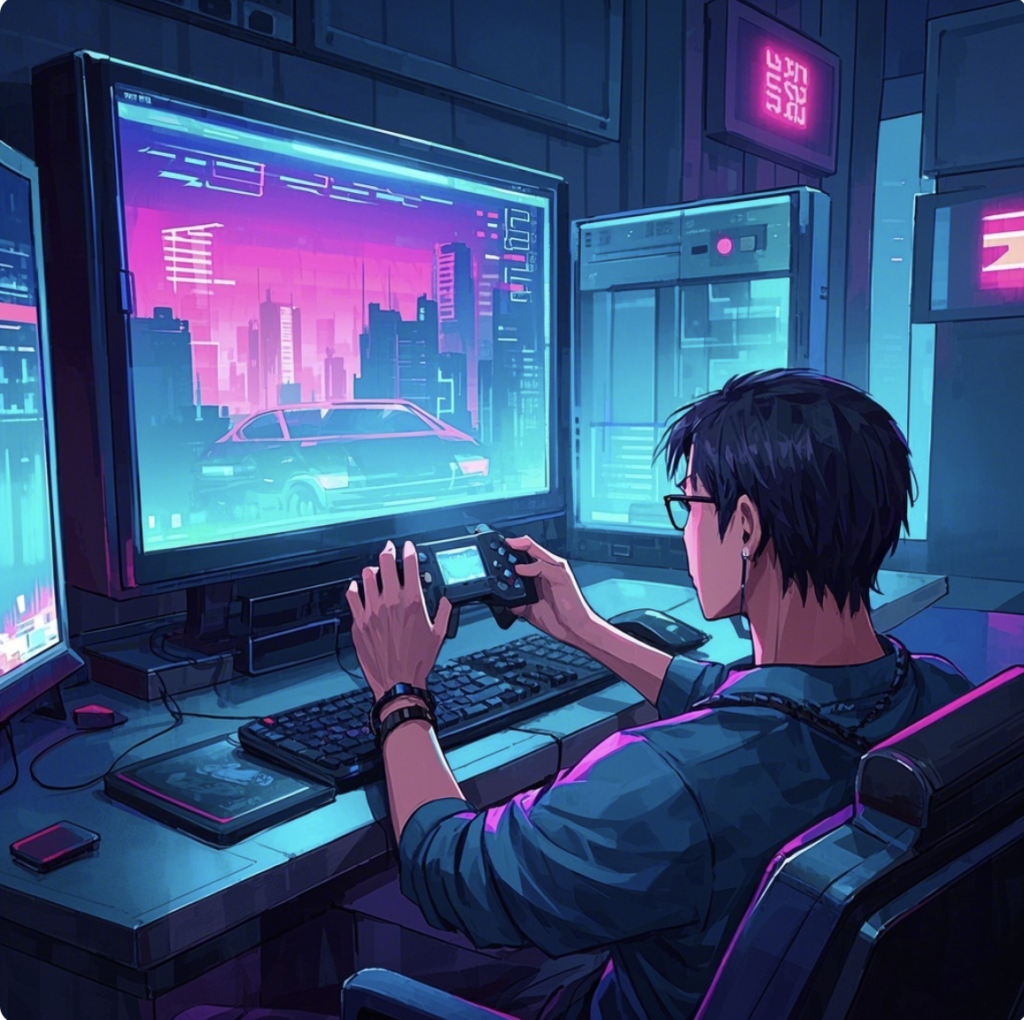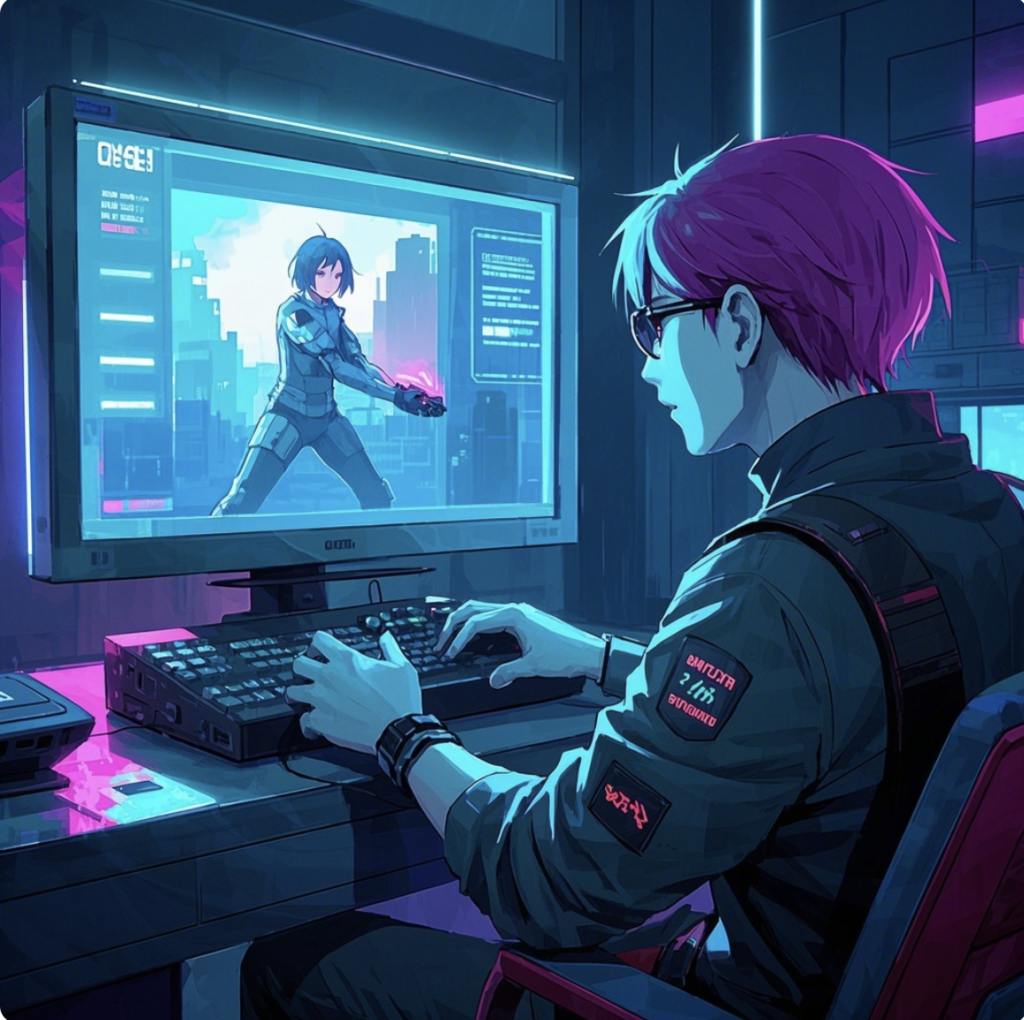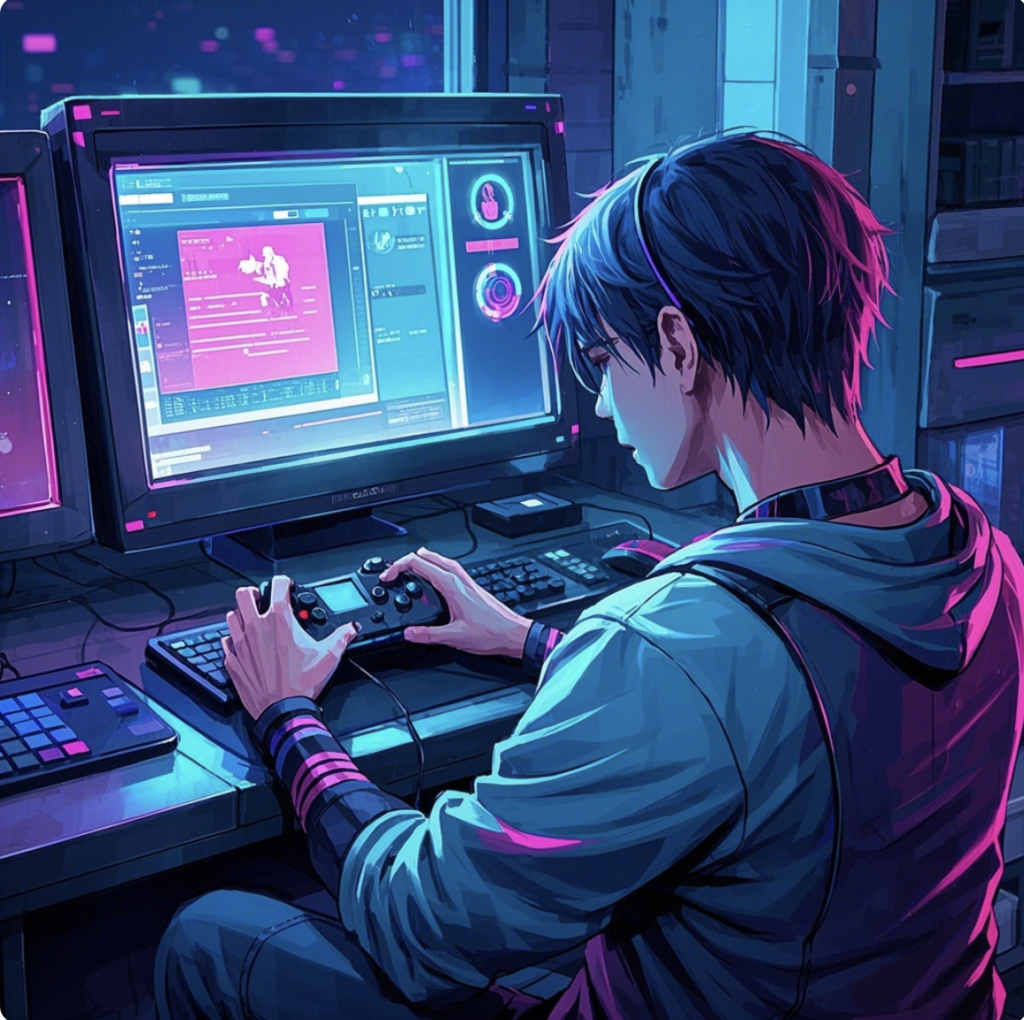The global gaming industry has experienced robust growth in recent years, driven by a confluence of technological advancements, shifting consumer behaviors, and strategic market expansions.

Emerging Growth Trend
Mobile gaming has retained its dominance in the market. Chinese developers have excelled on the global stage by adopting localization strategies and diversifying game genres, successfully capturing the attention of audiences in regions such as North America, Japan, and South Korea. Concurrently, the roll – out of 5G infrastructure has accelerated the adoption of cloud gaming, making high – quality gaming experiences more accessible to a wider audience. This has not only reduced barriers to entry for casual gamers but also expanded the overall user base.
Technical Support: Strong Force of Gaming Industry
Esports and immersive technologies like AR/VR have emerged as crucial growth drivers. They blend competitive gaming with mainstream entertainment, enhancing player engagement. The industry’s shift towards premium content, as seen in titles like Black Myth: Wukong, reflects a broader trend towards creating high-quality, narrative-driven experiences that resonate with increasingly discerning players. Additionally, the proliferation of mini-games and the integration of blockchain and AI – driven monetization models highlight ongoing efforts to diversify revenue streams and adapt to changing consumer preferences.
Also read: A Complete Guide to B2B Customer Service Outsourcing in 2025
Global Video Game Market Size Growth (2015-2023)
| Year | Market Size (USD Billion) | Growth Rate |
|---|---|---|
| 2015 | 91.8 | 9.6% |
| 2016 | 99.6 | 8.5% |
| 2017 | 108.9 | 9.3% |
| 2018 | 119.6 | 9.8% |
| 2019 | 131.2 | 9.7% |
| 2020 | 159.3 | 21.4% |
| 2021 | 175.8 | 10.4% |
| 2022 | 184.4 | 4.9% |
| 2023 | 196.8 | 6.7% |
Communication Between Gaming Developers and Gamers
Effective communication between gaming developers and gamers fosters a collaborative feedback loop that enhances game quality, builds community trust, and drives long-term success in the dynamic gaming industry.
Gamer Feedback: Contributing to Community development
Gamer feedback is a cornerstone of community development, serving as a direct channel for users to shape the products, services, and experiences they value most. By actively listening to and implementing community-driven insights, organizations foster trust, inclusivity, and shared ownership, which in turn strengthens engagement and loyalty. For example, incorporating user suggestions into feature updates or hosting feedback-driven events can create a sense of co-creation, transforming passive users into active advocates. This iterative dialogue not only improves offerings but also builds a vibrant, resilient community where members feel heard, valued, and invested in collective growth, ultimately driving sustainable development and long-term success. 🌱🗣️
Meeting Gamers’ expectations
Meeting gamers’ expectations is crucial for the success of any game. Gamers today have diverse and high – level expectations. To meet these, developers first need to actively listen to gamers through various channels such as social media, forums, and in-game feedback systems. They should understand gamers’ desires for gameplay mechanics, like smooth controls and innovative features. Visual aspects also matter a great deal, so developers must strive to create high-quality graphics that match or exceed what gamers anticipate. Storytelling within games has become increasingly important, and developers need to craft engaging narratives. Additionally, ensuring timely updates and patches to fix bugs and add new content is essential. By attentively addressing these areas, developers can satisfy gamers and build a loyal player base.
Forming a Positive and Inclusive Gaming Environment
Creating a positive and inclusive gaming environment requires intentional efforts to foster respect, representation, and accessibility for all players. This involves implementing strict anti-harassment policies with clear reporting systems, promoting diverse character design and narratives that reflect global cultures and identities, and integrating accessibility features (e.g., customizable controls, colorblind modes) to accommodate players with disabilities. Communities thrive when moderation teams actively address toxic behavior, while developers prioritize player education through in-game tutorials on empathy and teamwork. By celebrating inclusivity in events, forums, and content updates, gaming spaces can become safe havens where everyone—regardless of gender, race, ability, or background—feels valued, heard, and empowered to enjoy the shared joy of play. 🌍🎮✨

Social Media in Gaming Customer Service
Social media has revolutionized gaming customer service by enabling real-time, direct engagement with players across platforms like Twitter, Discord, and Reddit. Game companies now use these channels to resolve issues (e.g., bug reports, account recovery), gather feedback via polls or threads, and build community trust through transparent updates. For example, live-tweeting patch notes, hosting Q&A sessions on Twitch, or moderating player forums on Discord fosters a sense of connection. Advanced tools like AI chatbots and sentiment analysis streamline responses, while proactive monitoring addresses toxicity or misinformation. By blending speed, empathy, and creativity, social media transforms customer service into a dynamic dialogue that enhances player loyalty and shapes game evolution—turning crises into opportunities and fans into advocates. 🎮📱✨
Chatbots and AI in Gaming Customer Service
Chatbots and AI in gaming customer service are revolutionizing player support by providing 24/7 instant responses to common queries, automating repetitive tasks like account troubleshooting or billing inquiries, and leveraging machine learning to personalize interactions. These tools enhance efficiency by reducing wait times, analyzing player feedback to identify recurring issues, and even predicting user needs through behavioral patterns. While AI handles routine requests, human agents focus on complex or emotionally nuanced situations, creating a hybrid model that balances scalability and empathy. By integrating NLP (Natural Language Processing) for context-aware conversations and real-time data analytics, developers can optimize gameplay experiences, address bugs faster, and foster stronger player loyalty through proactive, seamless support.
VR and AR in Gaming Customer Service
VR and AR technologies are transforming gaming customer service by creating immersive, interactive support experiences. Virtual reality allows players to engage with AI-powered 3D customer service agents in lifelike virtual environments, resolving issues such as account setup, gameplay tutorials, or technical troubleshooting through real-time visual demonstrations. Augmented reality overlays contextual guidance onto physical spaces, enabling players to receive step-by-step assistance directly within their home setups, like configuring headsets or debugging hardware. These technologies also enhance proactive support by analyzing player behavior patterns to predict needs, personalizing interactions, and delivering tailored solutions—such as AR-powered in-game hints or VR-based community events. By blending cutting-edge interactivity with AI-driven insights, VR/AR elevate customer satisfaction, reduce response times, and foster deeper player engagement, positioning them as pivotal tools in modern gaming support strategies.
Understanding Gamers: Gamer Culture, Human Touch, Communication Channels, personalization and Data and Analytics
Understanding Gamer Culture
Immerse yourself in the gaming world. Play the games your company supports, follow gaming communities on social media, and watch popular streamers on platforms like Twitch and YouTube. This firsthand experience provides invaluable insights into gamer culture, terminology, and expectations. For example, understanding terms like “nerfing,” “grinding,” and “lag” is essential for effective communication.
Human Touch of Gaming Industry
The “Human Touch” in the gaming industry refers to the emotional connections, empathy, and personalized interactions that balance technological innovation with human-centric values. It encompasses player-developer relationships fostered through direct communication (e.g., live streams, forums), community-driven initiatives that celebrate fan creativity, and narrative-driven games that evoke genuine emotions. Developers prioritize inclusivity by designing accessible experiences for diverse audiences, while studios cultivate employee well-being to nurture creative cultures. This human element extends to customer service, where AI tools complement—but never replace—empathetic human agents addressing nuanced player concerns. By embedding compassion, storytelling, and community into every facet of game creation and engagement, the industry transcends mere entertainment to build lasting bonds that define its soul.
Communication Channels Through Gaming Industry
The gaming industry leverages diverse communication channels to bridge developers, players, and communities, fostering collaboration and enhancing experiences. In-game chat systems and voice platforms like Discord enable real-time player interaction, while social media (Twitter, Reddit) and live-streaming (Twitch, YouTube) serve as hubs for announcements, feedback, and viral content. Developers use official blogs, patch notes, and roadmap updates to maintain transparency, while customer support portals and AI chatbots address technical issues swiftly. Additionally, community forums and beta-testing groups crowdsource ideas, turning players into co-creators. By integrating these channels, the industry cultivates loyalty, drives innovation, and transforms gaming into a dynamic, participatory culture where every voice shapes virtual worlds. 🌐🎮💬

Personalization for Gamers
Personalization for Gamers refers to tailoring gaming experiences to individual preferences, behaviors, and skill levels, enhancing engagement and satisfaction. This includes customizable avatars, dynamic difficulty adjustments (e.g., AI adapting challenges based on player performance), and personalized content recommendations (e.g., suggesting games or in-game items aligned with playstyles). Advanced techniques like machine learning analyze player data to create unique narratives, rewards, or even procedurally generated worlds. For example, games like Cyberpunk 2077 allow deep character customization, while services like Xbox Game Pass curate titles based on user habits. By prioritizing personalization, developers foster emotional investment, reduce churn, and build immersive ecosystems where every player feels uniquely seen—turning games into dynamic extensions of identity. 🎮✨
Revenue Distribution by Platform (2023)
| Revenue Source | Share | Key Drivers |
|---|---|---|
| Mobile Gaming | 52% | Smartphone adoption, casual games |
| Console Gaming | 28% | PS5, Xbox Series X sales |
| PC Gaming | 18% | Esports, Steam platform |
| Others (e.g., Cloud) | 2% | Emerging technologies |
Data and Analytics
Data and analytics play a pivotal role in enhancing gaming experiences by providing actionable insights into player behavior, preferences, and pain points. Developers leverage real-time analytics to track in-game metrics such as playtime, engagement patterns, and drop-off rates, enabling them to optimize level designs, balance mechanics, and personalize content through dynamic difficulty adjustments or tailored rewards. Machine learning algorithms analyze vast datasets to predict player churn, identify monetization opportunities, and create hyper-personalized recommendations, fostering deeper immersion and retention. A/B testing and multivariate analysis refine user interfaces, narrative arcs, and monetization strategies, while sentiment analysis of community feedback ensures games resonate emotionally with diverse audiences. By integrating predictive analytics into live operations, studios proactively address technical issues, prioritize updates, and deliver proactive support, ultimately crafting more intuitive, responsive, and emotionally engaging experiences that align with players’ evolving expectations.



